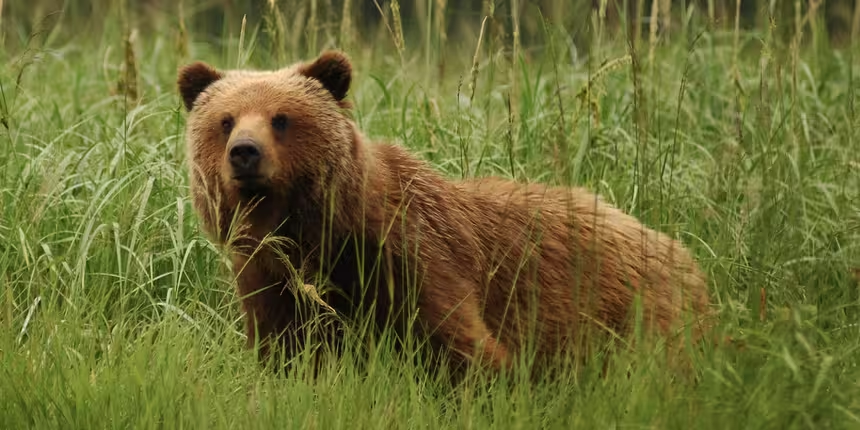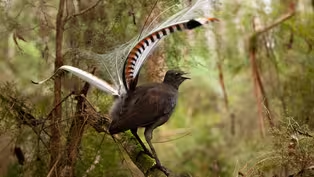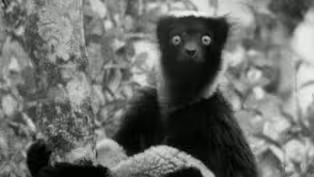
Footage Proves Female Songbirds Can Sing
Clip: Season 41 Episode 13 | 2m 33sVideo has Closed Captions
It was once thought that only male songbirds were capable of song.
It was once thought that only male songbirds were capable of song. However, in 64 percent of all songbird species, the females sing. Professor Naomi Langmore first made this discovery by recording a female fairy-wren singing to defend her territory.
Problems playing video? | Closed Captioning Feedback
Problems playing video? | Closed Captioning Feedback
Major support for NATURE is provided by The Arnhold Family in memory of Henry and Clarisse Arnhold, Sue and Edgar Wachenheim III, The Fairweather Foundation, Charles Rosenblum, Kathy Chiao and...

Footage Proves Female Songbirds Can Sing
Clip: Season 41 Episode 13 | 2m 33sVideo has Closed Captions
It was once thought that only male songbirds were capable of song. However, in 64 percent of all songbird species, the females sing. Professor Naomi Langmore first made this discovery by recording a female fairy-wren singing to defend her territory.
Problems playing video? | Closed Captioning Feedback
How to Watch Nature
Nature is available to stream on pbs.org and the free PBS App, available on iPhone, Apple TV, Android TV, Android smartphones, Amazon Fire TV, Amazon Fire Tablet, Roku, Samsung Smart TV, and Vizio.
Buy Now

Explore More Ways to Watch
Bring the beauty and wonders of wildlife and natural history into your home with classic NATURE episodes.Providing Support for PBS.org
Learn Moreabout PBS online sponsorship- [David] Professor Naomi Langmore was the scientist who made our fairy wren recording.
She was one of the first to realize the significance of female song.
A male fairy wren with glorious iridescent blue and striking black plumage, rather difficult to miss.
(fairy wrens singing) So where is the female?
Well, not at the top of a perch like a male, but instead, here, hiding in the bushes.
She is comparatively rather dull, a drab brown.
- Because females are often less flashy and eye-catching than males, it's very easy to miss female song.
(fairy wren singing) - [David] But sing, she does.
(fairy wren singing) Just as male song is used in competition with other males, female song seems to be in competition with other females.
But why didn't we hear her before now?
Is it really just because she's less noticeable than the male?
- In the history of the study of birdsong, most research was done in the northern hemisphere, in Europe and North America, and in those regions, female song is comparatively rare.
And so researchers working in those regions generalized from what they were observing in their local birds and assumed that male song was the norm throughout the world.
- [David] A male-biased view of birdsong had, to an extent, deafness to female song.
- So when I was doing my research, it was basically assumed that it's the male that sings and the female doesn't.
Maybe that's because most of the scientists were males who were studying birdsong.
- But now there's a new generation of female scientists coming through, studying bird song all around the world, and discovering that actually female song is very common and occurs in more species than not.
- And it's only now that they're properly being heard.
Naomi and her colleagues have discovered that in 64% of all songbird species, females sing, and that in the distant past, the ancestors of all songbirds would have had both male and female singers.
(birds singing)
Male Lyrebird Manipulates Female Into Mating
Video has Closed Captions
Clip: S41 Ep13 | 2m 42s | Up to now, scientists had thought that song was an honest signal from the male. (2m 42s)
Preview of Attenborough's Wonder of Song
Video has Closed Captions
Preview: S41 Ep13 | 30s | David Attenborough presents seven of the most remarkable animal songs found in nature. (30s)
Young David Attenborough Records First Lemur Sounds
Video has Closed Captions
Clip: S41 Ep13 | 2m 34s | In 1960, David Attenborough captured the first-ever audio of Madagascar’s largest lemur. (2m 34s)
Providing Support for PBS.org
Learn Moreabout PBS online sponsorship
- Science and Nature

Explore scientific discoveries on television's most acclaimed science documentary series.













Support for PBS provided by:
Major support for NATURE is provided by The Arnhold Family in memory of Henry and Clarisse Arnhold, Sue and Edgar Wachenheim III, The Fairweather Foundation, Charles Rosenblum, Kathy Chiao and...



